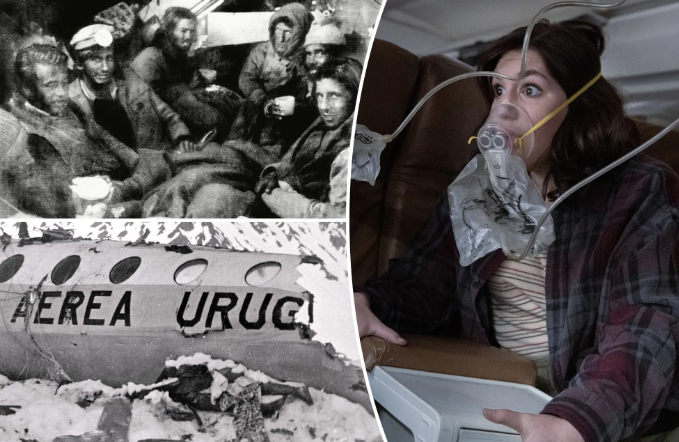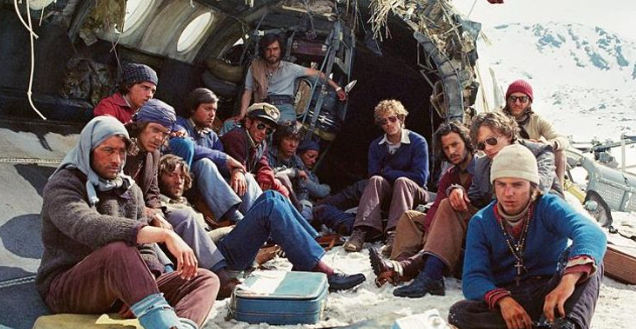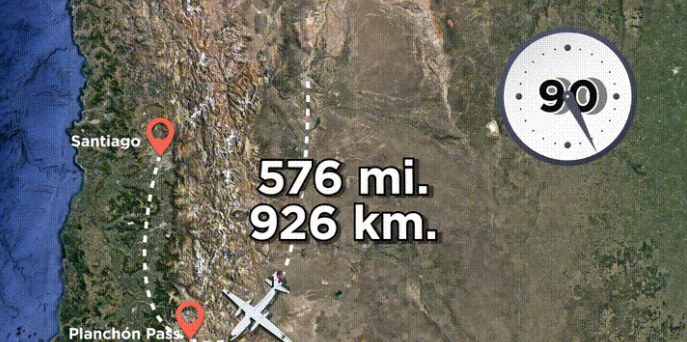The Mystery of Flight 571- फ्लाइट 571 की रहस्यमयी कहानी – Hindi/English

Table of Contents
Toggleपरिचय: उड़ान 571 का रहस्य क्या है?
फ्लाइट 571, जिसे उरुग्वेयन एयरफोर्स फ्लाइट 571 के नाम से जाना जाता है, इतिहास की सबसे रहस्यमयी और भावनात्मक घटनाओं में से एक है। यह घटना 13 अक्टूबर 1972 को हुई, जब विमान आंधी और खराब मौसम के कारण एंडीज पहाड़ों में दुर्घटनाग्रस्त हो गया। इस विमान में कुल 45 लोग सवार थे, जिनमें एक रग्बी टीम, उनके परिवार के सदस्य और अन्य यात्री शामिल थे। इस घटना ने पूरी दुनिया को झकझोर कर रख दिया और मानव साहस तथा अस्तित्व की शक्ति का एक अद्वितीय उदाहरण प्रस्तुत किया।
फ्लाइट 571 का दुर्घटनाग्रस्त होना
यात्रा की शुरुआत और विमान का रूट
यह उड़ान उरुग्वे की राजधानी मोंटेवीडियो से चिली की ओर जा रही थी। इसमें सवार लोगों में से अधिकतर एक रग्बी टीम के सदस्य थे, जो चिली में एक टूर्नामेंट के लिए जा रहे थे।
13 अक्टूबर को, विमान ने अपनी यात्रा शुरू की, लेकिन एंडीज पर्वत श्रृंखला के ऊपर पहुंचते ही खराब मौसम और खराब विजिबिलिटी के कारण यह नियंत्रित नहीं रह सका। पायलट ने दिशा का सही अंदाजा न लगाते हुए एक खतरनाक मोड़ लिया, जिससे विमान सीधे पहाड़ों से टकरा गया।

दुर्घटना के बाद की परिस्थितियां
जीवित बचे लोगों की स्थिति
दुर्घटना के तुरंत बाद, विमान में सवार 45 यात्रियों में से 12 की मृत्यु हो गई। अन्य बचे लोगों को सर्दी, भूख और चोटों से जूझना पड़ा। एंडीज पहाड़ों की कड़क ठंड ने उनकी मुश्किलें और बढ़ा दीं।
प्राकृतिक चुनौतियां
- तापमान माइनस 30 डिग्री सेल्सियस तक गिर जाता था।
- खाने-पीने के लिए कोई संसाधन उपलब्ध नहीं थे।
- लगातार बर्फीले तूफानों का खतरा।
सहायता की उम्मीदें
दुर्घटना के कुछ दिनों बाद, बचाव दल ने खोज बंद कर दी, यह मानते हुए कि कोई भी जीवित नहीं बचा होगा। यह समाचार दुर्घटना में फंसे लोगों के लिए एक बड़ा झटका था।
जीवित रहने के लिए संघर्ष
भोजन की कमी और कठिन निर्णय
जब भोजन के सभी साधन खत्म हो गए, तब बचे हुए यात्रियों ने अपने मृत साथियों के शरीर का सहारा लिया। यह निर्णय उनके लिए बेहद दर्दनाक था, लेकिन अस्तित्व की लड़ाई में यह आखिरी विकल्प था।
टीमवर्क और हिम्मत
- समूह ने बर्फ से पानी बनाने के तरीके निकाले।
- अपने टूटे हुए विमान को आश्रय के रूप में इस्तेमाल किया।
- एक-दूसरे का मानसिक और भावनात्मक समर्थन किया।
अंतिम प्रयास और बचाव
बचाव के लिए साहसी यात्रा
दो जीवित बचे यात्रियों, नांडो पाराडो और रॉबर्टो कैनेसा, ने मदद लाने के लिए पहाड़ों के पार 10 दिनों की लंबी और खतरनाक यात्रा की। उनकी यह साहसी यात्रा 72 दिनों के संघर्ष के बाद मदद लाने में सफल रही।
बचाव अभियान
23 दिसंबर 1972 को, बचाव दल ने अंततः 16 जीवित बचे लोगों को एंडीज पहाड़ों से बाहर निकाला। यह घटना मानवीय साहस और जिजीविषा की अद्भुत मिसाल बन गई।
फ्लाइट 571 की घटना से सबक
- अस्तित्व की ताकत: यह घटना सिखाती है कि मनुष्य कितनी कठिन परिस्थितियों में भी जीवित रह सकता है।
- टीमवर्क का महत्व: समूह ने अपने प्रयासों और एकता से असंभव को संभव कर दिखाया।
- प्रकृति के प्रति सम्मान: यह घटना हमें यह याद दिलाती है कि प्रकृति के सामने हम कितने छोटे हैं।

निष्कर्ष
फ्लाइट 571 की कहानी दुख, संघर्ष और आशा का प्रतीक है। यह घटना हमें यह सिखाती है कि विपरीत परिस्थितियों में भी हिम्मत और दृढ़ निश्चय से सब कुछ संभव है। यह कहानी इतिहास में हमेशा याद रखी जाएगी।
The Mystery of Flight 571
The tragic story of Flight 571, also known as the Uruguayan Air Force Flight 571, has captured the fascination of people worldwide. This harrowing event stands as a testament to human survival, courage, and resilience amidst unimaginable odds. Here, we uncover every detail about this mysterious flight, leaving no stone unturned.

The Mystery of Flight 571: A Comprehensive Exploration
The tragic story of Flight 571, also known as the Uruguayan Air Force Flight 571, has captured the fascination of people worldwide. This harrowing event stands as a testament to human survival, courage, and resilience amidst unimaginable odds. Here, we uncover every detail about this mysterious flight, leaving no stone unturned.
What Was Flight 571?
Flight 571 was a chartered flight carrying 45 passengers, including the Old Christians Club rugby team, their friends, and family. On October 13, 1972, the plane departed from Montevideo, Uruguay, bound for Santiago, Chile. Unfortunately, it never reached its destination.
The Fairchild FH-227D twin turboprop plane, operated by the Uruguayan Air Force, faced tragic circumstances that would etch its name in history.
The Fateful Journey
The Route and Weather Challenges
The flight path included a daunting crossing of the Andes Mountains, notorious for unpredictable weather and treacherous terrain. On that fateful day, dense clouds and turbulence forced the pilots to rely on navigation instruments, which led to critical errors.
The Crash
Due to miscalculations, the aircraft struck a mountain peak at 4,200 meters (13,800 feet) above sea level and broke apart. The tail section detached, and the fuselage came to rest on a glacier, trapping the survivors in one of the most inhospitable environments imaginable.
The Struggle for Survival
Immediate Aftermath
Out of the 45 individuals aboard, 12 died instantly. Survivors faced freezing temperatures, high altitude sickness, and limited resources. With no immediate rescue and no means to communicate with the outside world, their fight for survival began.
Limited Supplies
The survivors rationed the meager food supplies they had, including chocolates, wine, and other small snacks. However, these supplies ran out quickly.
The Controversial Decision
Faced with starvation, the survivors made a harrowing decision: they resorted to cannibalism, consuming the flesh of their deceased companions to stay alive. This act of desperation has been the focus of much debate but is understood as a measure of sheer survival instinct.

Search and Rescue Efforts
Initial Rescue Attempts
Authorities initiated search operations, but the crash site, buried under snow and hidden within the Andes’ rugged terrain, eluded detection. After eight days, the search was officially called off, leaving the survivors to fend for themselves.
The Turning Point
Realizing that rescue was unlikely, two survivors, Fernando Parrado and Roberto Canessa, decided to embark on a perilous journey to find help. Equipped with minimal supplies and immense determination, they trekked for ten days through treacherous conditions before encountering a Chilean herdsman who alerted authorities.
The Rescue Mission
On December 20, 1972, after 72 days in isolation, the remaining 14 survivors were rescued. Their story shocked and captivated the world, becoming a symbol of human endurance and the will to live.
Lessons Learned from Flight 571
Improved Aviation Safety
The disaster of Flight 571 led to advancements in aviation safety protocols, including better training for mountain navigation and emergency preparedness.
Human Resilience
This incident highlights the extraordinary resilience of the human spirit. The survivors’ courage continues to inspire countless individuals to face adversity with strength and determination.

Pop Culture and Legacy
The story of Flight 571 has been immortalized in books, documentaries, and films, most notably in the movie “Alive” (1993). It serves as a reminder of both the fragility and strength of human existence.
Final Thoughts
The mystery of Flight 571 isn’t merely about tragedy; it’s a story of survival against impossible odds. The survivors’ journey teaches us about the depths of human courage, the strength of community, and the will to persevere.













5 comments